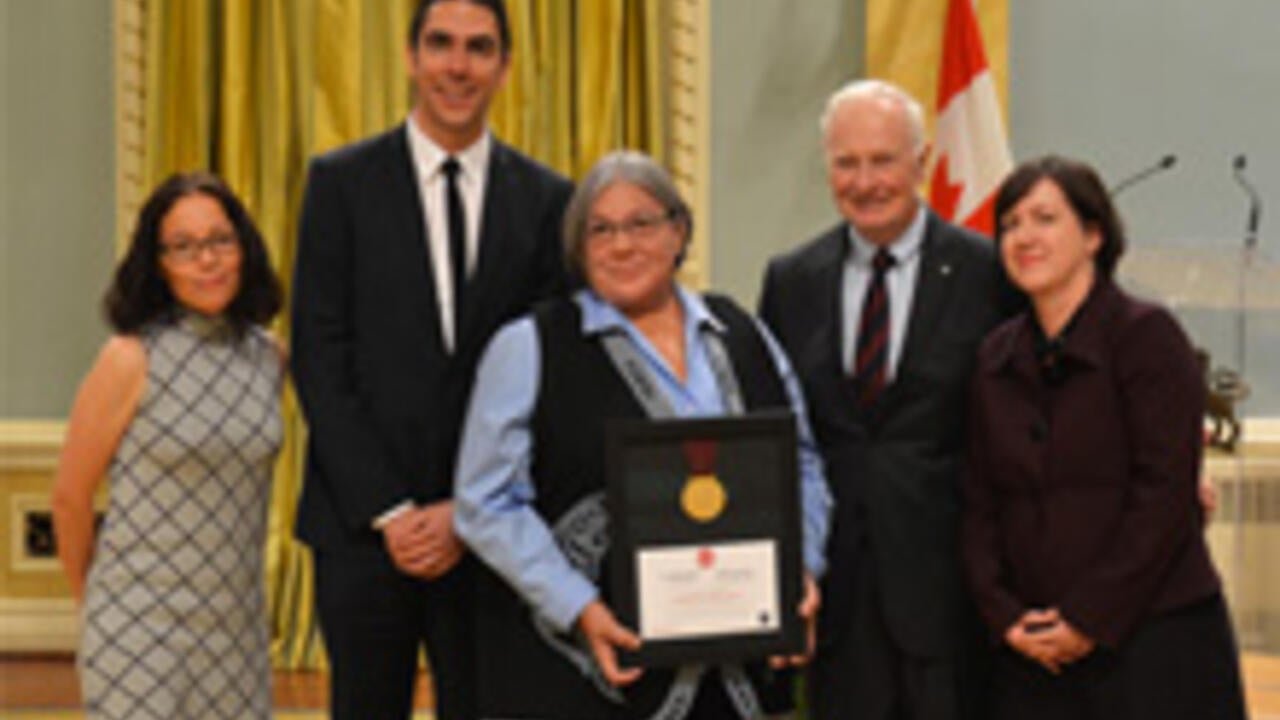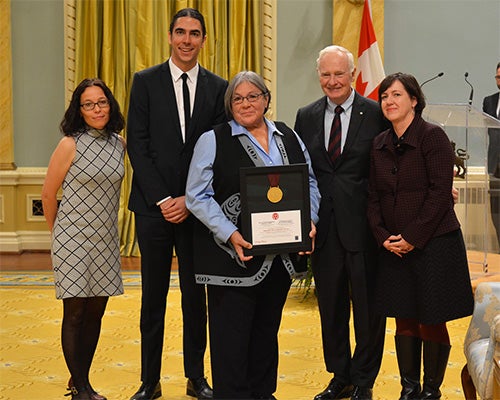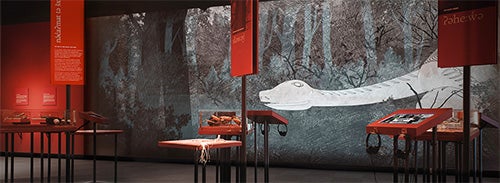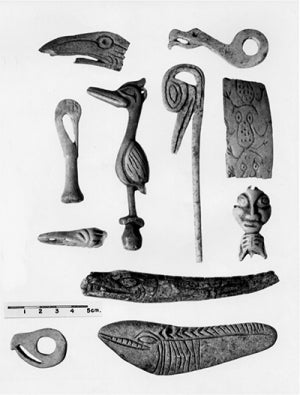
Governor General honours Waterloo history prof
Susan Roy awarded for “remarkable contribution” to understanding First Nations’ history

Susan Roy awarded for “remarkable contribution” to understanding First Nations’ history
By Wendy Philpott Faculty of ArtsThe Governor General of Canada has honoured a Waterloo history professor for her “remarkable contributions” to the understanding of First Nations’ history.
History Professor Susan Roy was awarded a joint Governor General’s History Award along with her collaborators for a multi-site exhibition in Vancouver called c̓əsnaʔəm, the city before the city.

Left to right: Viviane Gosselin, MOV, Jordan Wilson, Musqueam First Nation and MoA, Leona Sparrow, Musqueam First Nation, Governor General of Canada David Johnston, and Susan Roy.
“Given this year’s report from the Truth and Reconciliation Commission, I’m particularly proud to see this recognition of Susan Roy’s research highlighting Aboriginal history,” says Dean of Arts Doug Peers. “It’s incumbent on the academic community to contribute to redressing such a critical national issue.”
The exhibits tell the story of one of the largest ancient Musqueam villages and burial sites upon which Vancouver was built. Along with Roy, the exhibits were jointly curated by the Musqueam First Nation, the University of British Columbia, and the Museum of Vancouver (MOV).

The collaboration was initiated in 2012 with Roy’s SSHRC Partnership Development grant, for which she was principal investigator, and also draws from her 2010 book: These Mysterious People: Shaping History and Archaeology in a Northwest Coast Community.
The book traces the long history of interpretation around the site of the Musqueam village of c̓əsnaʔəm, known as the Marpole Midden. The village was the source of ancestral remains and cultural objects for local, provincial and international museums, such as the American Museum of Natural History in New York City. “Archaeologists and historians since the late 19th century interpreted this site in ways that disassociated local Indigenous connections to place,” says Roy. “From the 1970s onwards the Musqueam First Nation began to have more control over public interpretations of indigneous history in Vancouver.”
The three-location exhibition is intended to generate public discussion about indigenous history, and to raise awareness of the significance of c̓əsnaʔəm for the Musqueam people and Vancouver. The ancient village of c̓əsnaʔəm was founded about 5,000 years ago at what was then the mouth of the Fraser River, and is today in Vancouver's Marpole area.
 “There was a tremendous amount of community collaboration and consultation, including a Musqueam Advisory Group that guided the project,” says Roy. “I was a co-curator for the MOV exhibit that emphasized a critical history of museum collecting practices as well as Musqueam's interpretation of the objects that are a part of the MOV collections.”
“There was a tremendous amount of community collaboration and consultation, including a Musqueam Advisory Group that guided the project,” says Roy. “I was a co-curator for the MOV exhibit that emphasized a critical history of museum collecting practices as well as Musqueam's interpretation of the objects that are a part of the MOV collections.”
The exhibition uses a number of digital components that were also developed by Waterloo students and graduates, explains Roy, a recipient of an Ontario Early Researcher Award last year which provides funding for student research assistants.
Research Assistant Paisley Cozzarin developed a digital database of historic records that was instrumental for research and information sharing. The show incorporates 3D digital scans and prints of some of the belongings in the collections of the American Museum of Natural History. These scans and prints were developed by Wilfrid Ngo, a Waterloo computer science graduate and technician at Think2Thing in Toronto.
Saki Murotani with a young Musqueam artist developed an animation of the Musqueam origin story depicting a two-headed serpent projected on the entire wall of the exhibition gallery. Other Waterloo history students assisted with archival research and transcribing oral histories.
“These histories of dispossession are not unique to Vancouver, as Indigenous communities across the country continually assert their Aboriginal and treaty rights,” says Roy. “I look forward to further developing models of community research and public engagement with projects and partnerships in Ontario.”

Read more
Meet five exceptional Waterloo graduate students crossing the convocation stage as Class of 2025 valedictorians

Read more
The medal honours outstanding individuals across Canada who have made significant contributions to their communities

Read more
Waterloo welcomes emerging postdoctoral scholars to receive funding from Provost fellowship programs
The University of Waterloo acknowledges that much of our work takes place on the traditional territory of the Neutral, Anishinaabeg, and Haudenosaunee peoples. Our main campus is situated on the Haldimand Tract, the land granted to the Six Nations that includes six miles on each side of the Grand River. Our active work toward reconciliation takes place across our campuses through research, learning, teaching, and community building, and is co-ordinated within the Office of Indigenous Relations.